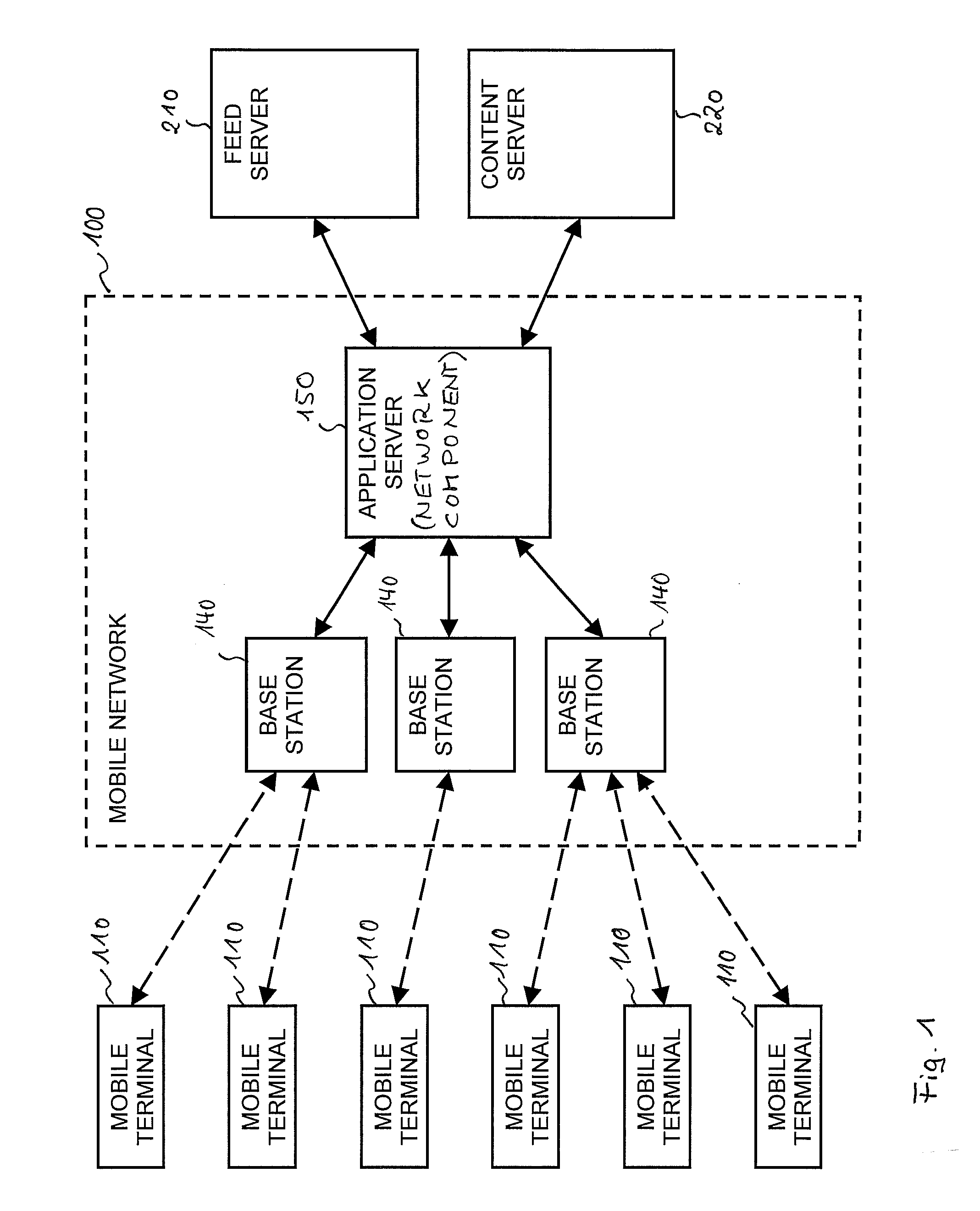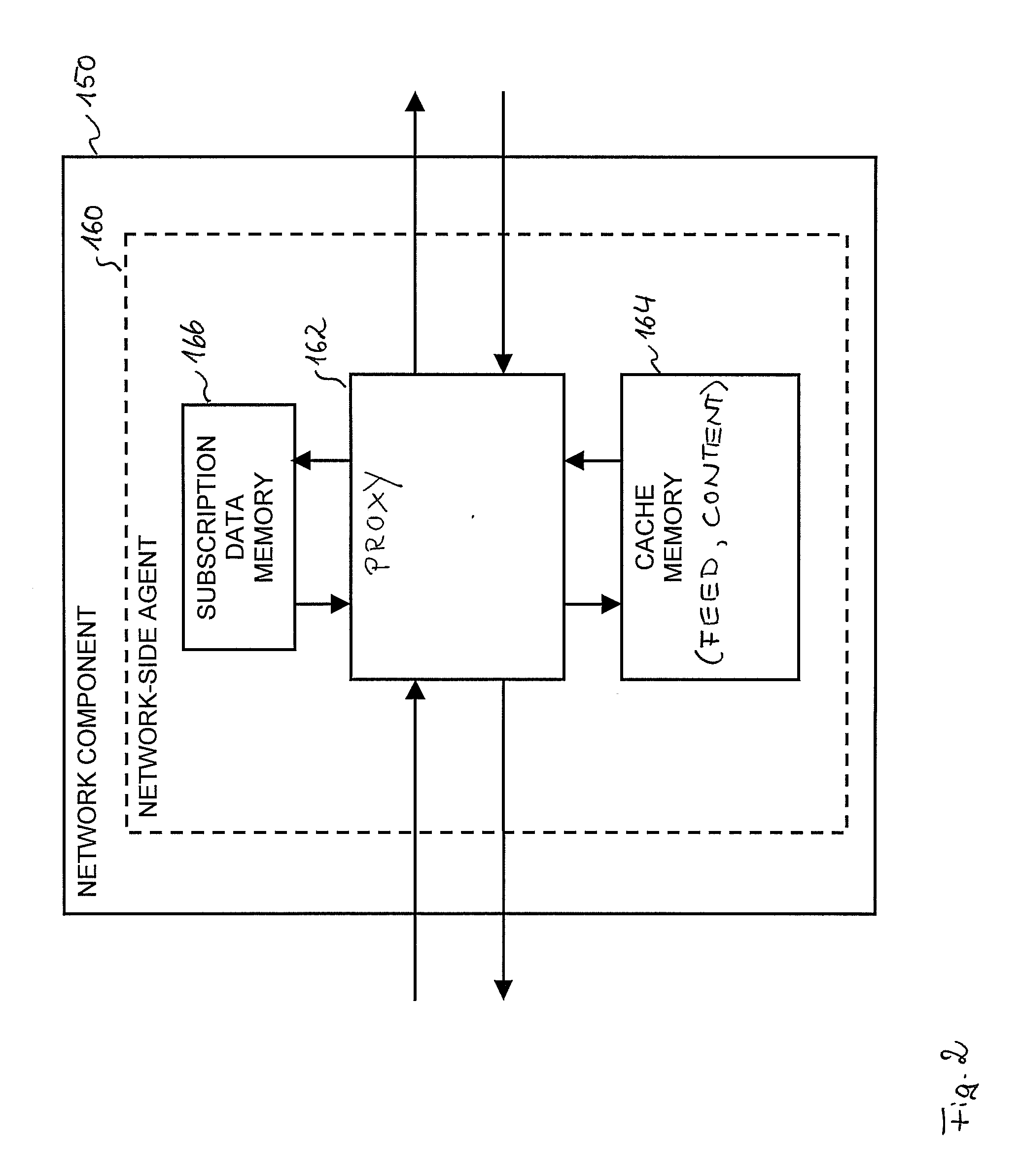Techniques for Feed-Based Automatic Transmission of Content to a Mobile Terminal
a mobile terminal and content technology, applied in the field of feed-based automatic transmission of content to a mobile terminal, can solve the problems of increasing bandwidth consumption, increasing feed itself, endless feed, etc., and achieve the effect of reducing bandwidth consumption, reducing bandwidth consumption, and reducing bandwidth consumption
- Summary
- Abstract
- Description
- Claims
- Application Information
AI Technical Summary
Benefits of technology
Problems solved by technology
Method used
Image
Examples
Embodiment Construction
[0036]In the following description, exemplary embodiments of the invention will be described with respect to the accompanying drawings. It is to be understood that this description and the illustrations are merely exemplary and not intended to limit the scope of the invention. It will be apparent for the skilled person that the illustrated exemplary embodiments may be modified without departing from the concept of the invention. For example, the functional blocks as described below may be implemented using software in connection with a programmable processor or general purpose computer or by using dedicated hardware, as appropriate. Further, it is to be understood that the signal connections as illustrated hereinafter may be either direct connections or indirect connections.
[0037]FIG. 1 schematically illustrates a mobile network 100. The mobile network 100 is coupled to a plurality of mobile terminals 110 via wireless communication links (illustrated as dashed arrows). Further, the ...
PUM
 Login to View More
Login to View More Abstract
Description
Claims
Application Information
 Login to View More
Login to View More - R&D
- Intellectual Property
- Life Sciences
- Materials
- Tech Scout
- Unparalleled Data Quality
- Higher Quality Content
- 60% Fewer Hallucinations
Browse by: Latest US Patents, China's latest patents, Technical Efficacy Thesaurus, Application Domain, Technology Topic, Popular Technical Reports.
© 2025 PatSnap. All rights reserved.Legal|Privacy policy|Modern Slavery Act Transparency Statement|Sitemap|About US| Contact US: help@patsnap.com



